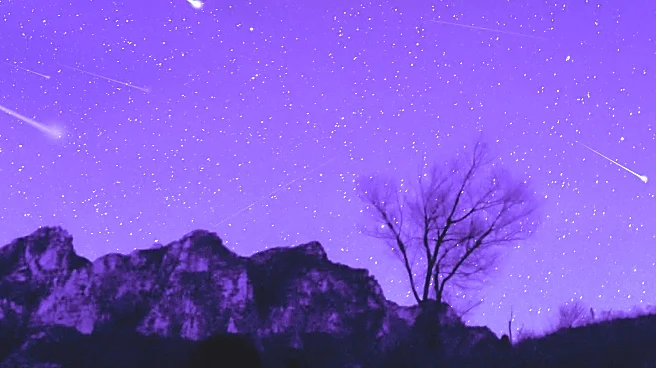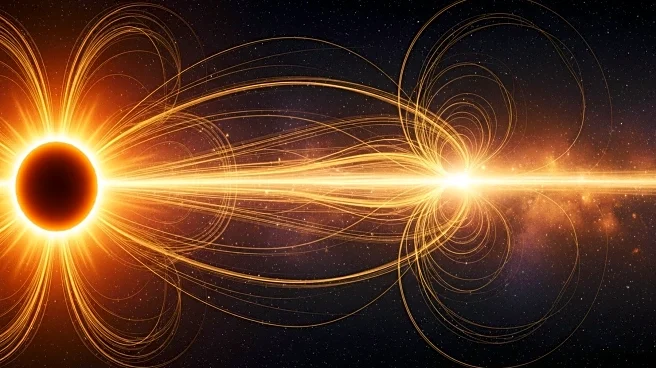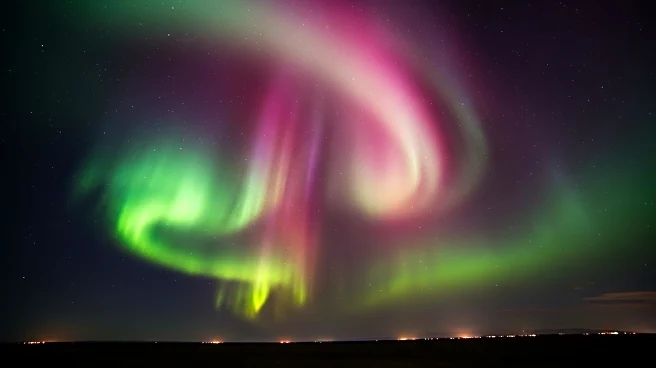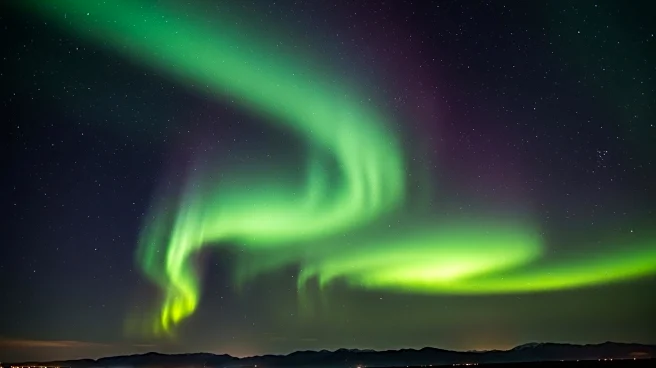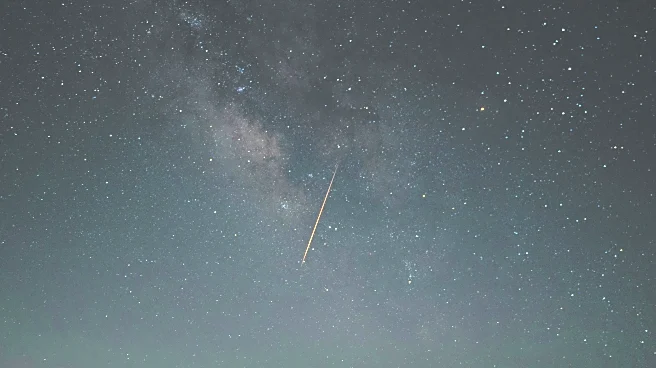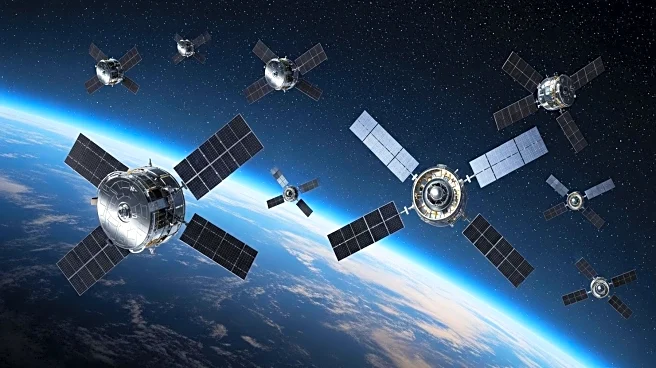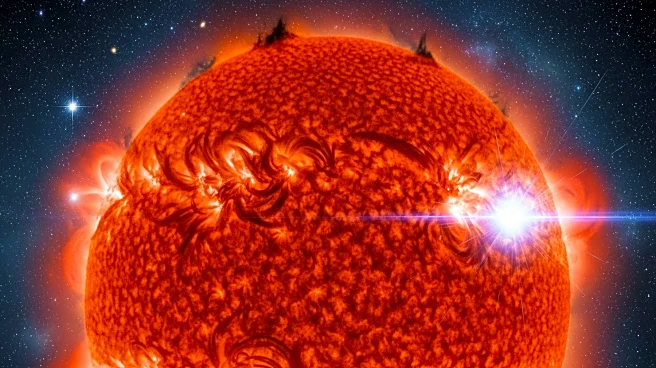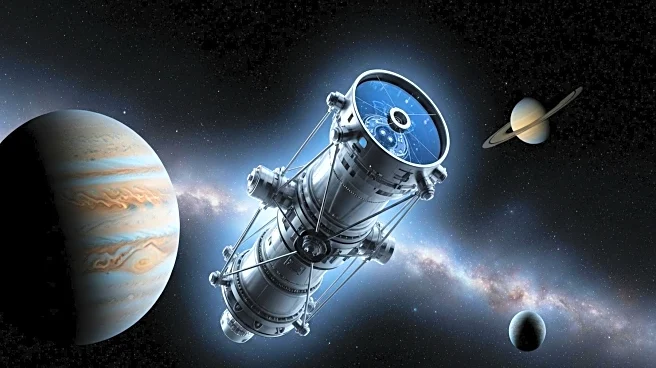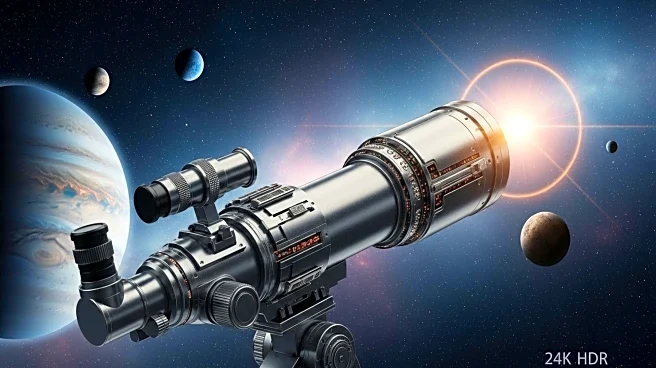What's Happening?
Skywatchers are in for a treat as the Chi Cygnid meteor shower peaks on September 13-14, offering a rare opportunity to see slow-moving meteors. This shower occurs only every five years, making 2025 a special year for observers. Additionally, a geomagnetic storm watch has been issued due to a 'butterfly' hole in the sun's atmosphere, potentially causing auroras to be visible further south than usual. Saturn, Jupiter, and Venus are also prominent in the night sky, with Saturn nearing opposition and Jupiter and Venus dominating the pre-dawn sky. The moon reaches its last quarter on September 14, providing dark skies for optimal viewing conditions.
Why It's Important?
The Chi Cygnid meteor shower and potential auroras offer a unique opportunity for skywatchers to witness celestial phenomena that are not frequently visible. The geomagnetic storm could extend auroral displays beyond typical polar regions, allowing more people to experience the Northern Lights. The alignment of planets provides additional interest for astronomers and enthusiasts, highlighting the dynamic nature of the night sky. These events can inspire interest in astronomy and science, encouraging public engagement and education in these fields.
What's Next?
Observers are advised to find dark locations away from city lights to maximize their chances of seeing meteors and auroras. The geomagnetic storm's impact will depend on the solar wind's magnetic field orientation upon arrival, influencing the visibility and intensity of auroral displays. Skywatchers should monitor updates from space weather forecasters for the latest information. The planetary parade will continue, with Saturn reaching official opposition on September 20-21, providing further opportunities for observation.
